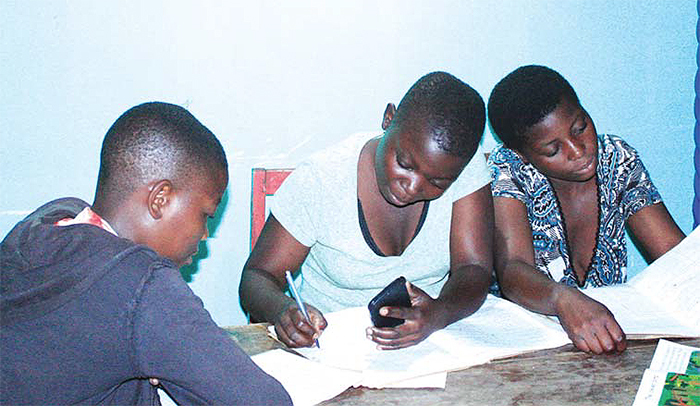20 districts benefit from WWF solar project
Dec 02, 2018
“If the wind blew out the candle in the middle of a delivery, it would put the mother at greater risk of complications,”

Kitabu Primary School is one of the schools that have benefitted from the solar power project
World Wildlife Fund Uganda Country Office (WWF-UCO) is implementing the Scaling-Up Rural Electrification Using Innovative Solar PV Distribution Models Project with funding from the European Union (EU). The overall objective of the project is to improve rural livelihoods and reduce the greenhouse gas emissions through widespread access to clean and renewable sources of energy by 2025
The majority of Ugandans living in rural areas rely on kerosene for lighting. They are often unaware that the black carbon generated from these lamps is a source of illness and a key contributor to climate change. WWF is working with a range of partners in the Albertine Rift region to champion the adoption of solar technology in schools, health centres, trading centres and rural homesteads to improve service delivery at the institutions, reduce maternal health problems and improve community livelihoods.
When night falls on the slopes of Mount Rwenzori in western Uganda, a few blocks of buildings stand out in the darkness. Ihandiro Health Centre III, which lies 15km from Bwera at the border with the Democratic Republic of Congo, is one such building which has become a source of attraction for the community ever since it was connected to electricity. "We are like a small city in a sea of darkness," Martin Kibatsi, the officer in charge of Ihandiro Health Centre III, says. When he switches on the lights at the health facility, Kibatsi breathes life into this remote village that used to go to sleep at 7:00pm, because of insecurity in the area.
The health centre now operates 24 hours a day, which was not the case three months ago. Patients used to fear visiting the facility at night and even health workers shied away from staying at the health centre. For expectant mothers, coming to the facility in the night was frightening. The maternity ward, like all other buildings at the facility, was always engulfed in darkness. The only source of light at the facility were candles. Patients used to come to the health centre with their own lamps, torches or candles to provide light in the ward. "We were using candles to carry out deliveries," Kibatsi says.
 Pupils can use electricity instead of lamps to revise at night
Pupils can use electricity instead of lamps to revise at night
"If the wind blew out the candle in the middle of a delivery, it would put the mother at greater risk of complications," he adds. Other procedures such as placing a cannula on a patient's arm were also difficult to carry out. Sometimes patients had to be referred to Bwera hospital, he says. The cost of an ambulance from Ihandiro Health Centre III to Bwera Hospital is sh100,000. Most members of the community could not afford to pay even half that amount. Diagnosis of diseases Godwin Kamara, the laboratory technician at Ihandiro HC III, says electricity has been critical in enabling him to conduct accurate diagnoses of diseases.
Before the health facility had access to electricity, Kamara relied on natural light to examine specimens such as blood, stool and urine under the microscope. "Without a proper diagnosis of diseases such as malaria, you can easily compromise a patient's health," he says. "If a patient came in the night, they had to wait until morning to carry out proper tests, thus losing out on valuable time," Kamara adds. Management of vaccines Lydia Kabugho, the officer in charge of Mahango Health Centre III in Kasese district, which has also benefitted from the rural electrification project, says access to electricity means better storage and management of vaccines.
She says the majority of rural government health facilities that have no access to electricity use gas to power refrigerators to maintain the cold chain and keep vaccines that need refrigeration safe. These cylinders require periodic refilling and if not done in time, the vaccines can easily go bad, Kabugho says. "We no longer need to refill the cylinders because we now have access to power 24 hours a day," she says.
We no longer worry about vaccines going bad. This has stopped the problem of stock outs of vaccines and allows them administer life-saving vaccines at the right time to babies. The turnaround at Ihandiro and Mahango health centres demonstrates the power of electricity in the transformation of service delivery at health facilities. WWF has installed similar systems at 18 other health facilities across two model districts of Kasese and Arua which are found in the Albertine Region.
